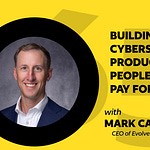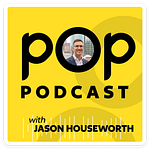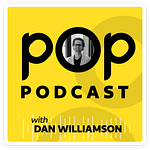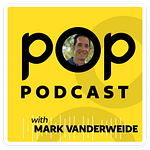Description: Your team knows they should "fail fast" but they're still playing it safe. Why? Product leader Meg Sutton realized her people needed to hear that failure was expected and okay before they'd take real risks. In this episode, she shares what shifted everything and why openly sharing and celebrating failures became one of their greatest strengths. Plus, how to lead change when you love change more than everyone else.
Redefining "fail fast" for your product team
The concept of "failing fast" gets thrown around a lot in product circles, but Meg discovered something important: her team needed explicit permission to actually do it. Despite intellectually understanding that not everything would work, they were unconsciously seeking guaranteed wins instead of taking the intelligent risks that drive innovation.
"We have had a lot of discussions as a product organization recently about what does it mean to fail fast? What does that look like? How does that show up?"
So what does it look like? Sharing when it happens, celebrating it, and learning from it together. It's not about seeking out failure, but it can be an intentional exercise when we know the outcome will never be perfect. If you're not failing, you're not trying.
As Meg put it… Let's ski hard! We're gonna fall down and that's okay.
With her team she openly communicates that failure is not just acceptable, but expected. And that has made all the difference.
"One of the observations that I made to myself when we were having that conversation is I think that they needed to hear from me that failing was expected and it was okay."
The unspoken pressure of perfection
Even though she knew that not everything would work (having come up through product management herself), her team was feeling pressure to make everything they touched perfect.
The fix wasn't terribly complex, but it required intentionality: "Tell your teams it's okay to fail and that actually you want to hear about it, you're gonna celebrate it, and that it's expected as part of their role."
This isn't about seeking failure for its own sake. As Meg puts it:
"Not that we're seeking out things that we know will fail, but we learn from those lessons. It's an intentional exercise to see the outcome. And when the outcome is not perfect, we modify the strategy, we take a different approach, and we go back to the drawing board."
Strategy as a living thing
This mindset shift from perfectionism to learning extends beyond individual projects to how Meg thinks about strategy itself. Rather than treating it as a static document created once per year by leadership, she advocates for something far more dynamic and inclusive.
At RX Savings Solutions, they've implemented quarterly strategy sessions with their extended senior leadership team. It's about 60 people including product managers, engineering leaders, and their direct reports, asking questions like: Are we still on track? What's changed, what's possible, how are we trending to milestones? More than a check-in, it's an opportunity to course-correct based on real market feedback and execution learnings.
A key insight worth sharing: the people executing the strategy need to be involved in evolving it.
"The market insights and the market intelligence and the client feedback and all of those components that as a product organization we should be doing should drive the strategy."
Leading change when you love change
Another relatable challenge Meg shared was learning to manage her own enthusiasm for change. She is absolutely excited by and okay with change. In her own words, she’s the first one on the bus and she’s driving. But being a change enthusiast in a leadership position requires restraint and empathy.
"I have had to check myself and take a step back and say, you've gotta bring others along. Others need me to bring them along, tell them why I'm so excited."
This tension between moving fast and bringing people along is one of the core challenges of product leadership. The solution isn't to slow down, but to invest more heavily in communication. Setting the context over and over again.
Tech hasn’t solved the apparent communication crisis
Despite all our collaboration tools and communication platforms, communication consistently shows up on every company's improvement list.
"Everywhere I've ever been, communication and collaboration are always on the 'we need to fix it' list.”
Her insight is that tools alone don't solve this. It requires intentional practices and, importantly, moving beyond just sending information to actually ensuring understanding. The difference between "I sent the requirements" and "we discussed and aligned on the requirements" is the difference between activity and value creation.
TLDR;
Meg's approach to product leadership centers on three key principles:
Creating psychological safety by explicitly giving permission to fail and learn
Treating strategy as collaborative and iterative rather than top-down and static
Investing time and intention in communication that goes beyond just info transfer
These aren't groundbreaking concepts. The magic is in the execution and the discipline to maintain these practices even when things get chaotic.
As she wisely noted: "If you want to be innovative and create real change, you have to be comfortable with pain. But hopefully the outcomes we're all searching for—more certainty in projects, safety protocols—those are outcomes people really want."
People of Product is brought to you by Crema - a design & technology consultancy












